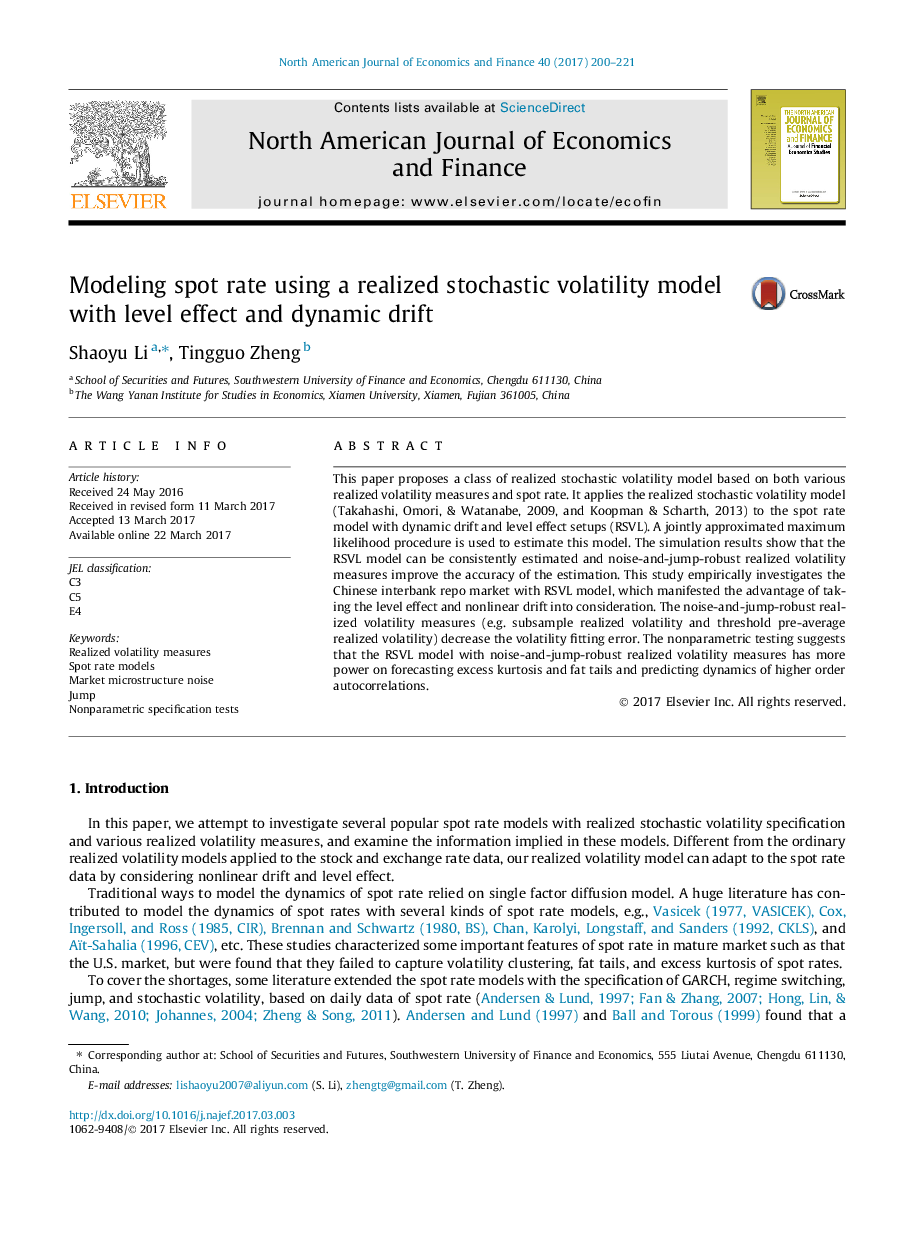| Article ID | Journal | Published Year | Pages | File Type |
|---|---|---|---|---|
| 5102244 | The North American Journal of Economics and Finance | 2017 | 22 Pages |
Abstract
This paper proposes a class of realized stochastic volatility model based on both various realized volatility measures and spot rate. It applies the realized stochastic volatility model (Takahashi, Omori, & Watanabe, 2009, and Koopman & Scharth, 2013) to the spot rate model with dynamic drift and level effect setups (RSVL). A jointly approximated maximum likelihood procedure is used to estimate this model. The simulation results show that the RSVL model can be consistently estimated and noise-and-jump-robust realized volatility measures improve the accuracy of the estimation. This study empirically investigates the Chinese interbank repo market with RSVL model, which manifested the advantage of taking the level effect and nonlinear drift into consideration. The noise-and-jump-robust realized volatility measures (e.g. subsample realized volatility and threshold pre-average realized volatility) decrease the volatility fitting error. The nonparametric testing suggests that the RSVL model with noise-and-jump-robust realized volatility measures has more power on forecasting excess kurtosis and fat tails and predicting dynamics of higher order autocorrelations.
Keywords
Related Topics
Social Sciences and Humanities
Economics, Econometrics and Finance
Economics and Econometrics
Authors
Shaoyu Li, Tingguo Zheng,
